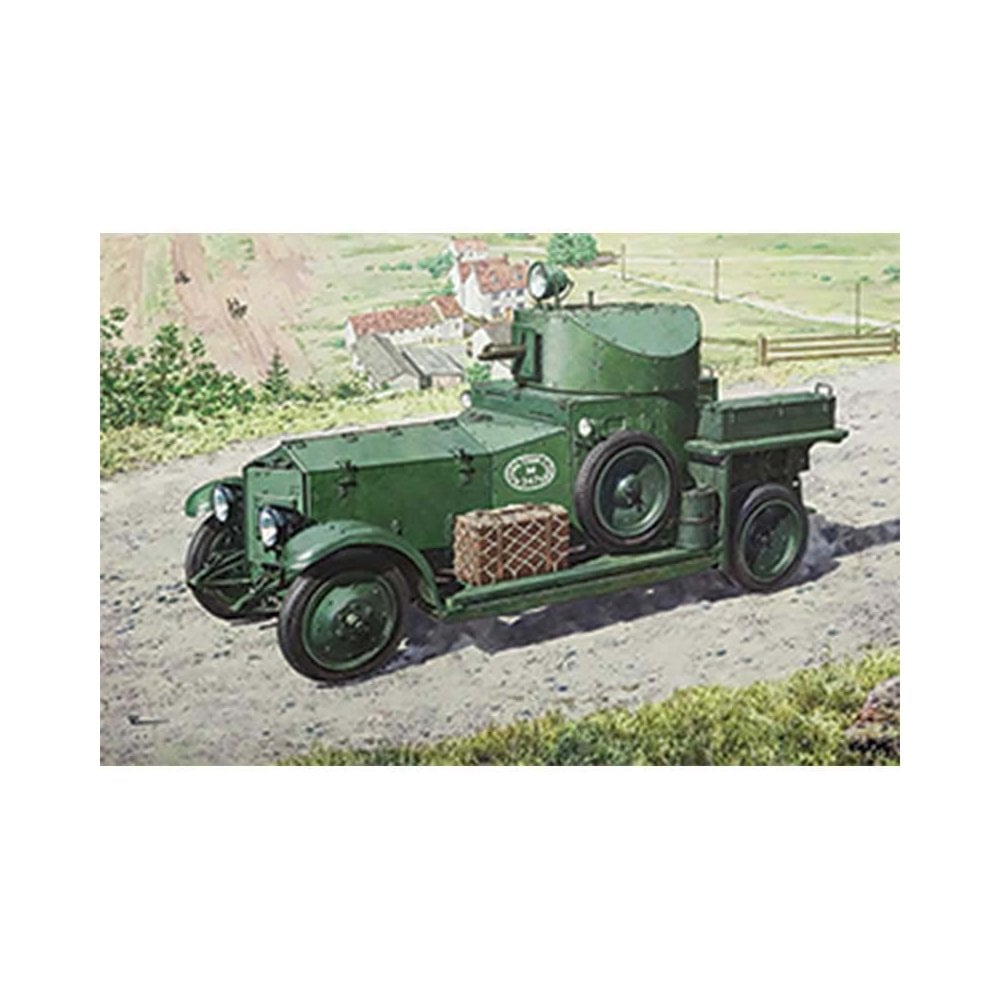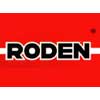£11.00 Original price was: £11.00.£9.90Current price is: £9.90.
1/72 British Armoured Car (Pattern 1920 Mk.I) Roden 731
Discontinued
1/72 British Armoured Car (Pattern 1920 Mk.I) Roden 731A history of this armored car would require a great many pages, devoted to its lengthy and varied service in the British armed services; and it is connected, oddly enough, with aviation. At the beginning of WWI the British military directed their thoughts to the need to protect newly built airfields against their being suddenly overwhelmed by enemy troops. The Royal Naval Air Service (RNAS) suggested to the Admiralty that a special armored car be developed, which could not only execute defensive functions but also as necessary support army units in combat, and fulfill communication and transport duties. Soon, the Air Department of the Admiralty made overtures to a firm in the motor industry, Rolls-Royce, which had been producing cars for about ten years.In 1906 this firm introduced the highly successful Silver Ghost, which continued to be built by the factory while the War was already under way. Admiralty engineers developed an original simple armored superstructure for the Silver Ghost chassis, which appeared to be successful in all respects. In December 1914 the first three cars were issued to the army. A rotating turret fitted with a Vickers machine gun was installed on top of the armoured body. On the whole the design appeared to be just what was wanted, and soon the motor company received a new order for additional cars.
With the onset of physical fighting at the Western Front soldiers became interested in the armored car. However, the idea of sending the car into the battle area, which featured impassable mud for kilometer after kilometer, was intimidating from the very beginning. The fragile suspension of this passenger car with an armored shell would never be able to survive in these conditions. The active military service of this car in the trench war was over before it had even begun. However the War quickly spread from Europe to other regions of the world. The Middle East, and Africa, where the war also began for the possession of the German colonies, were the most promising for the application of the fast and reasonably well protected armored car.Instead of guarding airfields in the territory of Misty Albion, six newly formed squadrons of the Royal Naval Air Service were sent to the hot and dusty deserts of North Africa and to the Turkish province of Gallipoli, where the fighting had already been going on for some time. These cars were found to be highly useful weapons, and even the end of the Great War did not put a full stop to their career. In 1920 they underwent their first modernisation. And four years later, another one. Elegant on a passenger car, but worse than useless for a military armored car, the spoke wheels were exchanged for ones with full metal disks. The form of the turret was changed for an open topped one, and instead of a Vickers gun, a Boys anti-tank rifle and a Bren light machine gun were fitted. It was also equipped with a smoke grenade launcher.
In the 1920s these cars continued to take part in armed service: in the colonies of Great Britain they co-operated with aviation, repressing local revolts by unarmed colonial tribes; and even in Europe employment was found for them, during the period of civil war in Ireland, when the British government delivered several armored cars to the Irish government to counter the attacks of the Irish Republican Army. These vehicles conducted their active service until 1944 and were retired only due to the complete wearing out of their working parts.One of the cars passed into the hands of one of the best-known eccentric historical figures of the 20th Century, Lawrence of Arabia: his armored car was used by him during his guerrilla actions and other adventures in the Middle East. In due course the Thirties came to their end and there was again a smell of war in the air. There was extensive modernisation in Europe, and also in the armor of the British Army. At the time about one hundred Armoured Cars remained in service in the colonies. The majority (about 70) of them were in North Africa, where they soon faced Italian troops. Some more were in India, carrying out raids in the territory of neighbouring Burma.Today, some original armoured cars of this type have been preserved in different countries of the world. They have been quite valuable private property for a long time now, and remind us of those distant times, when the first blundering motorised constructions, weakly protected against an opponent’s firearms, enabled rapid development of a military technical idea and led to the appearance of more modern mobile weapons in the future.PerformancesLength 5.09m
Width 2.18m
Height 2.34m
Combat weight 4.6t
Ground clearance 0.254m
Engine 6-cylinder, water-cooled in-line 80hp(60kW)
Armor Maximum 8.5mm
Armament 1x.303 Vickers machine gun
Ammunition 3000 rounds
Fuel capacity 82L
Operating range 309km
Maximum speed 88km/h
Crew 3 or 4
- Royal Mail Tracked (Standard)** (£3.89) 2-3 Working Days***
- Royal Mail Tracked (Express)** (£5.99) 1-2 Working Days***
- FedEx (£8.99) Next Working Day***
- Free – 2-6 Working Days*
** Limited to maximum weight of 2kg *** These are not guaranteed delivery times and delays are possible
*Free delivery is subject to restrictions, orders between £60-£99.99 containing products that can only shipped with Royal Mail. Orders that include products like aerosols, large quantity of flammable products or over maximum size and weight allowed by Royal Mail will not be sent free and are subject to a carriage charge, Orders over £100 are not subject to restrictions and apply to UK Mainland only. Orders containing hazardous or oversized goods cannot be shipped to NI, IOM, IOW, Highlands, these are excluded from our free shipping.
Order cutoff times - Monday 11am, Tuesday to Friday 12pm.
Order processing days Monday-Friday
Working days are Monday to Friday and do not include weekends


